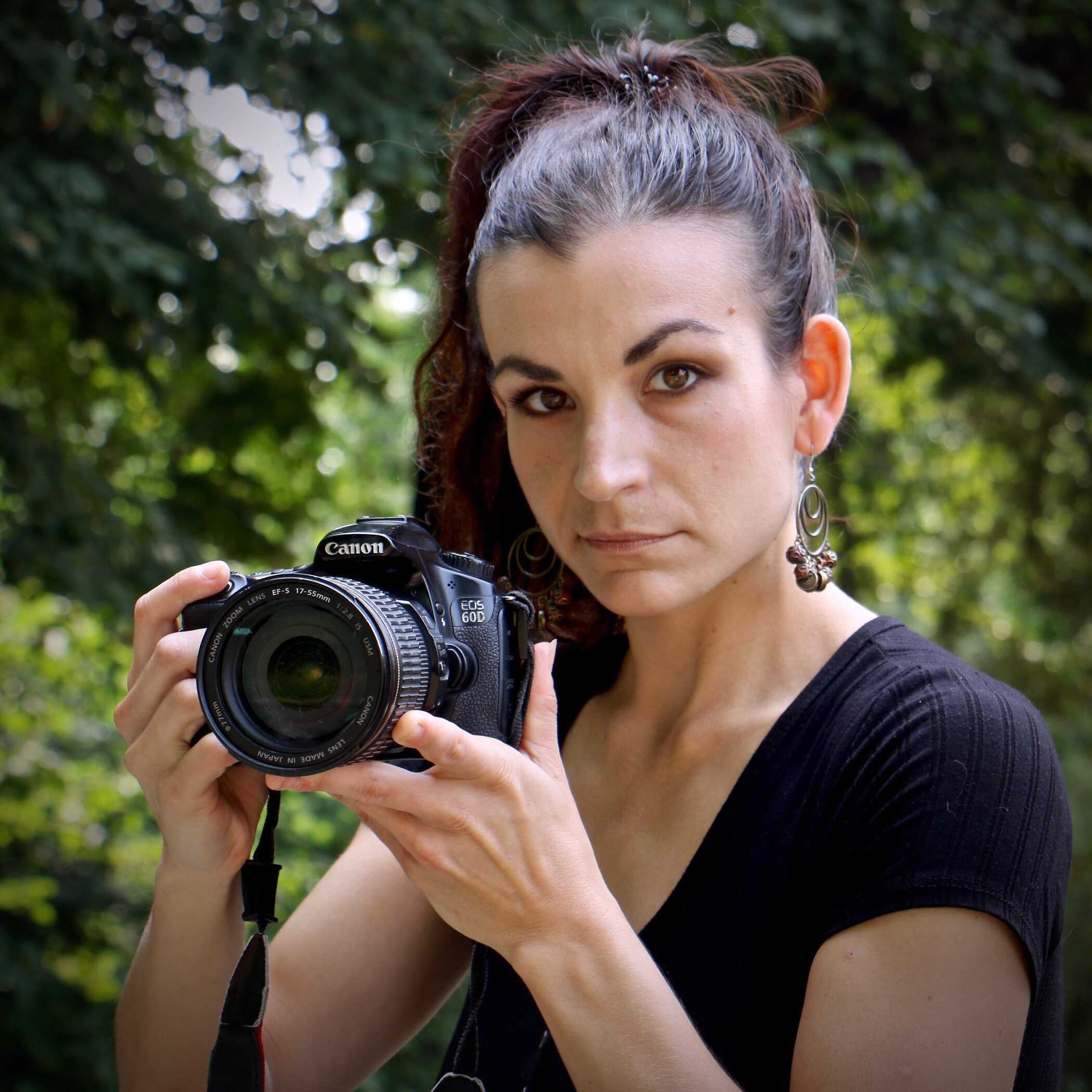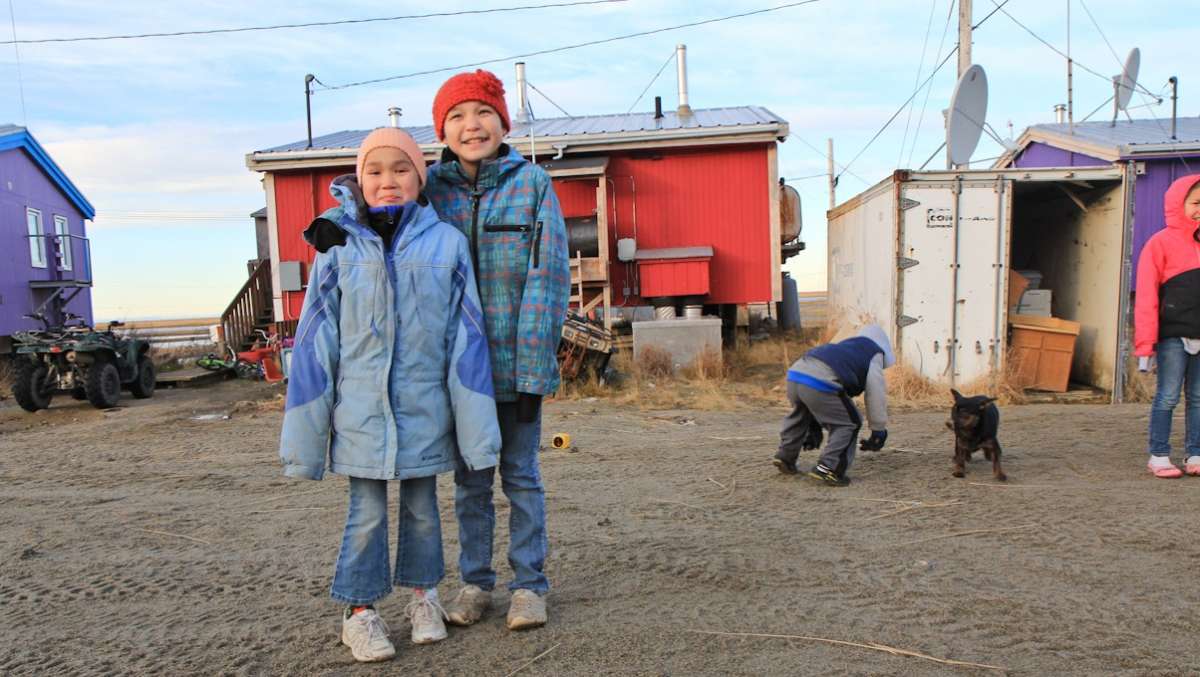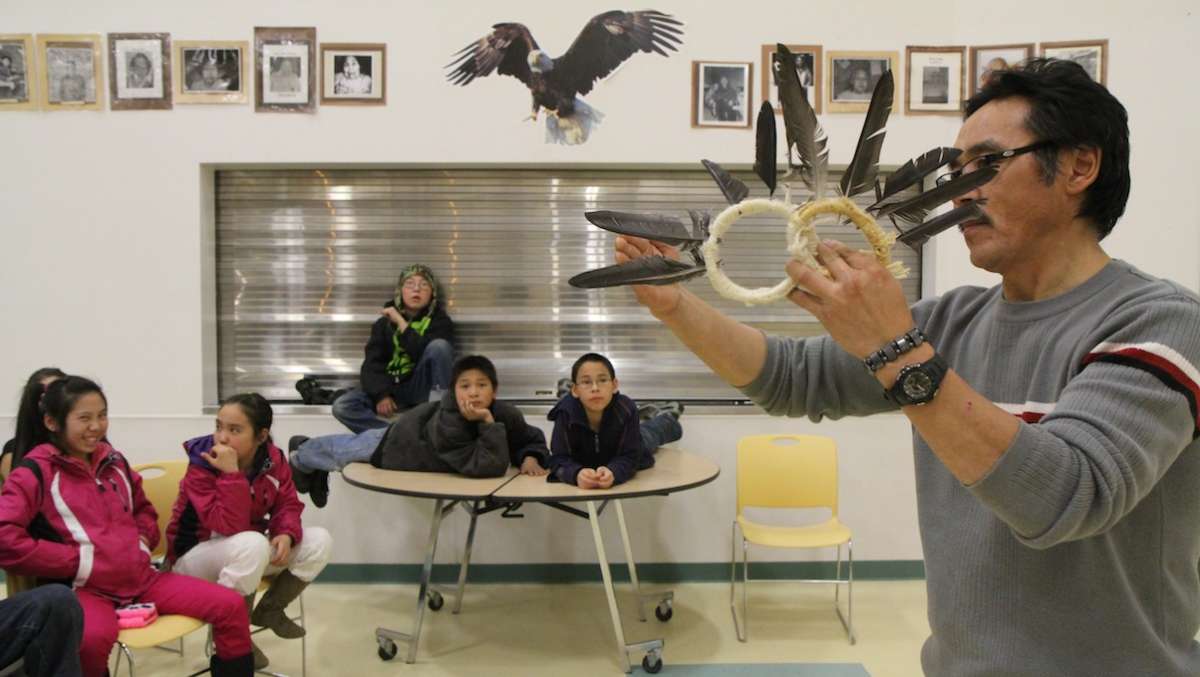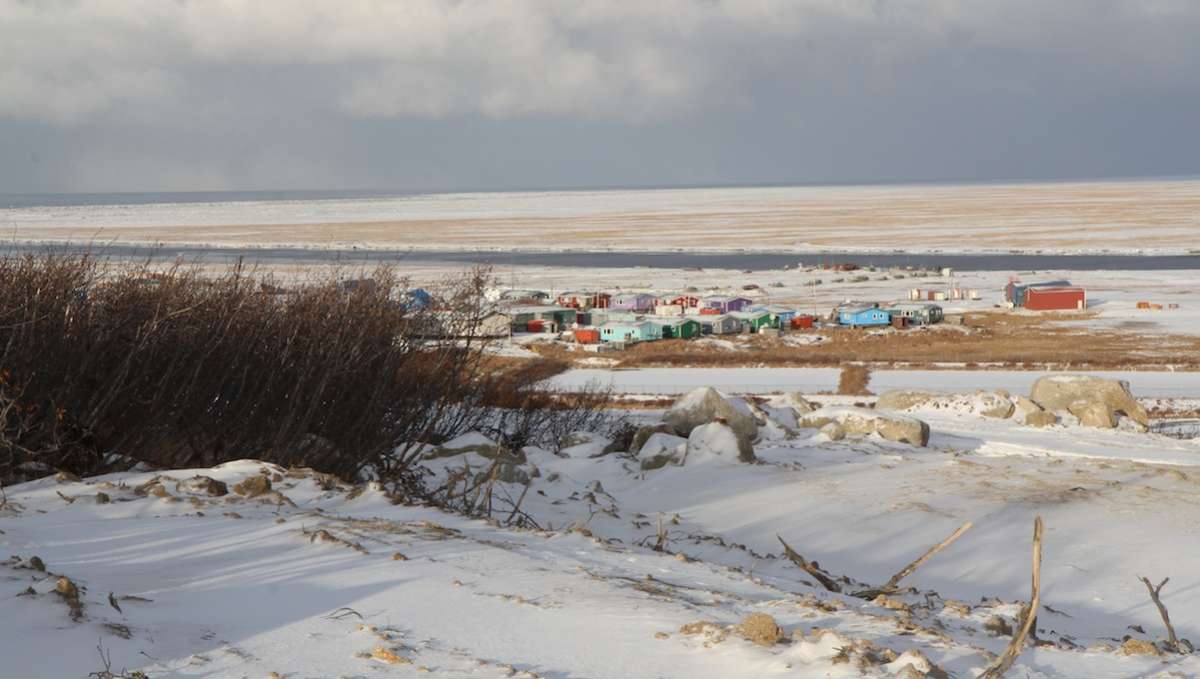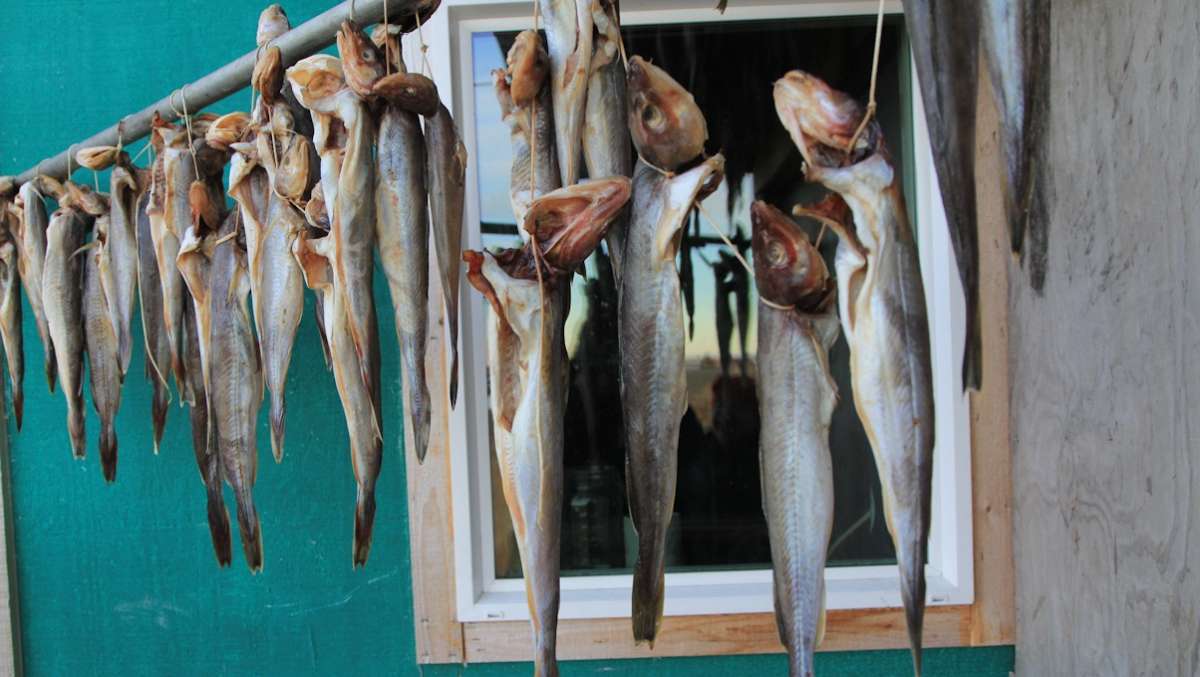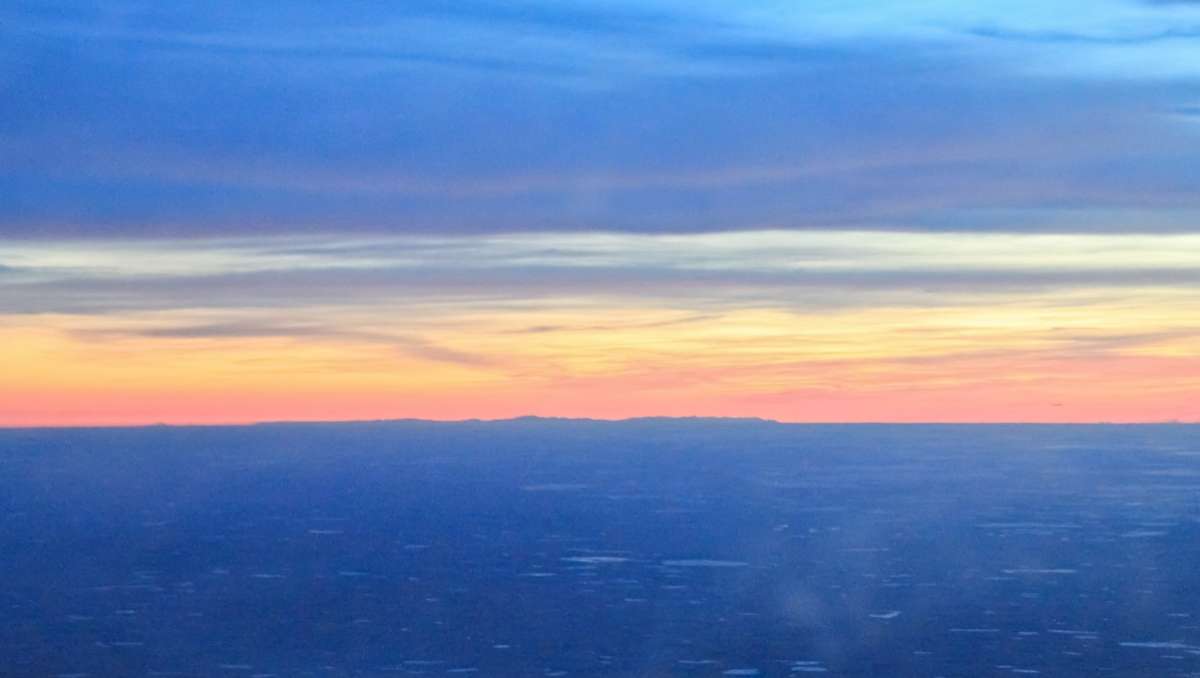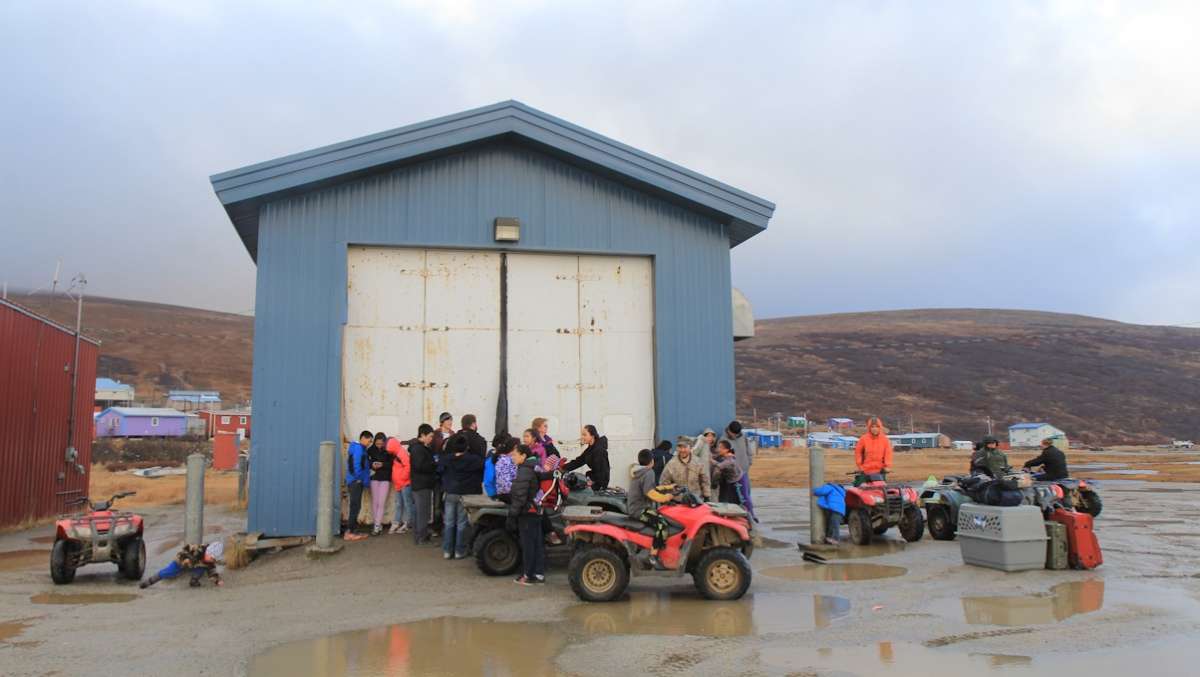Photographer’s notebook: Portrait of Scammon Bay, native Alaskan village
Five heads poke out of the middle school classroom windows. Other students are huddled around their smart phones, sitting on the carpet in the classroom library. Some fold paper airplanes to launch from the windows. Paul Rizzo, their language arts teacher and my best friend of 10 years, scans the room quickly and realizes he’s losing control.
“Hakuna Matata!” he booms.
“What a wonderful phrase!” The students reply and take their seats.
Class in Scammon Bay, Alaska, a small village of indigenous Yup’ik people, has begun. In a village of about 500 residents, more than half are under 18 and enrolled in the K-12 school.
The village sits next to a hill on the central coastal tundra, between the Yukon and Kuskokwim Rivers, on soil that is frozen for most of the year and unable to support tree growth. The trailer-style homes are bright: turquoise, magenta, yellow. I’m told there are dangerous animals just beyond the village and not to wander away without a shot gun.
Paul took the job in Scammon after graduating from Temple University with his secondary English education degree in 2012. His romantic fascination with Alaska and the bleak job prospects for an inexperienced teacher in his home city led him to apply to the Lower Yukon School District. He was interviewed and hired almost immediately.
Job turnover for teaching positions in the district’s 11 schools is high. For someone not born into a village, life can be lonely and isolated. Sometimes the natives can be perceived as cold to outsiders, who they typically refer to as “gussaqs,” the Yup’ik term for white people. The word comes from Cossacks, the first Russians who made contact with native Alaskans.
For the first year, Paul had difficulties making friends with villagers, who tease him about his McDonald’s cravings and basketball skills.
Eventually he built a reputation as an attentive and innovative teacher in the community and is much loved by his students, especially for his ritual of blowing a train whistle in the hall to get the kids to class and hollering, “All aboard!”
The kids badger me relentlessly during my visit. “Why do gussaqs always wear that kind of hat?” They tap my shoulder and disappear as I turn around. They gleefully question everything: “Are you Paul’s girlfriend? Where do you sleep?” The questions make me laugh, but they also make me silent. “How do people die in Philadelphia?”
Life in the tundra
I arrive in late October, when temperatures range between 45 and 0 degrees Fahrenheit and the very first flakes of snow start to fall. The sun rises around 10:30 a.m. and sets at 7 p.m. By a few weeks into November, the village hardly sees the sun at all. It’s the end of seal-hunting season, so when the school maintenance worker Richard picks me up from the airport in the village’s one working truck, I see carcasses hanging from porches. Only peoples indigenous to Alaska are allowed to hunt seal, walrus and whale.
As a gussaq, Paul has gone on fishing trips, hunted bear, moose and geese, and been schooled in berry picking. Beyond what can be hunted or found, there is one small general store that sells delicacies. A can of pop costs $2, and a small bag of chocolate shortbread cookies, $6.50.
All supplies arrive by air from the nearest hub, Bethel, a city of about 7,000 people. There are no roads on the tundra. Bush plane is the only way to reach Scammon Bay.
Richard is used to hauling people and packages to and from the short runway that is about a half-mile from the school. I ask Richard what would happen if gas ever became too expensive to fly daily supply planes to the village to deliver their Doritos, gun powder and dog food. Amused, he says he doesn’t know.
On my first day, Richard explains that a young man had frozen to death in the village a few nights before. He had been drinking and passed out in the cold. Possession of alcohol in the village is illegal, and the imaginations of the kids are captured by this forbidden vice.
“Do you drink? You dipping?” They grab my jaw and squeeze my lips together to open my mouth to check for chewing tobacco. Many in the village chew, and I get suspicious of Paul’s students spitting on the ground all the time, so I start grabbing their jaws and asking, “You chew?”
Paul and I excitedly prepare a lesson plan to teach the kids about documentary filmmaking. We split them up into groups, and after a day of technical instruction, we have them interview the village elders about subsistence activities: hunting, weaving, berry picking, dance, trapping, carving and fur preparation.
Kids anywhere don’t like to be told what to do, but teaching in Scammon Bay is more frustrating than catching salmon with your bare hands. To every instruction, the kids ask, “How come?” I’m grateful when Paul teaches me the answer they can’t refute: “So you could ask!”
“Ten of my students will end up going to college, out of 55. Most will return to the village,” says Paul. “Most return because they don’t have the social skills to assimilate into the city.”
I have a tough time motivating the kids. They gravitate toward the classroom windows, often to watch planes make tough landings in wind storms. Even though the kids have Xboxes and the Internet, most prefer to zip around on the four-wheelers they use to commute around the village.
When the kids spot a white weasel around the edge of some brush, we surround it and throw rocks. They play a game they call ice hopping, and surround Paul on a small frozen stream and jump up and down, trying to crack the ice around him and soak him up to his calves. We hit a ball around with a bat, and I completely lose myself in the joy of the game.
After two days in the classroom, I am so exhausted that I take refuge from the middle-school classes by spending the day in Shaun Hennessy’s high school English class, where they are creating masks based on traditional Yup’ik myths.
Shaun is another gussaq teacher, from Portland, Ore. He plays soothing music during class. I spend an entire school day using glue to layer tissues over cardboard to make a walrus face. Teachers are required to include aspects of Eskimo culture in their lessons in an attempt to preserve the native way of life, to not get too dependent on the supplies being flown in daily.
The teachers agree that, although the kids relish subsistence activities, there is no going back to the former way of life. Shaun says he could see technology and outside influences being problematic in preserving the culture.
The most common question Shaun is asked is if he’s coming back next year after summer break in Oregon. He says the kids don’t need another teacher who doesn’t stay. Shaun is in his third year of teaching in Scammon and admits it’s absolutely maddening at times.
“Sometimes you just watch a lesson plan bomb, and you just continue … because trying to make up something on the spot would be an absolute disaster!” Shaun adds that it’s hard to motivate the high school students, that a few will go to college, a few to the job corps, and some will move to other villages to get jobs and start families.
Shaun ended up leaving Scammon to be closer to his fiancée.
The last hunters
Last September, Paul, a few hunters and students spent five hours tracking a grizzly bear. After finally delivering the kill shot, they had to drag the bear two miles over the tundra.
“Eskimos are one of the last hunter-gatherer tribes on the planet,” says Paul, who’s watched first hand how that operates along side modern culture. “All the kids have smart phones and NBA players’ shoes, but at the same time, every seventh-grade girl or boy could go out and find food. It’s weird, in America we’re like, ‘no guns in school,’ then your students are taking you out hunting on the weekend.”
The kids ask me a lot if I’ve ever shot a moose, and they’re tickled when I tell them I’ve never even seen one. Shaun and I agree there is a genuine happiness in the kids and a mischievousness that’s fueled by their curiosity. He says that the kids are perpetually present. “I think it’s a great spiritual exercise to be able to live in the moment. We’re trying to find out what’s funny for right now to keep from being bored.”
When I return to the classroom the next day, Paul suggests I show the kids some of the videos I’ve made in Philadelphia. Their eyes bulge when I show them one about the mural on a building next to a 50-car parking lot.
That night, we invite community elders to give Paul’s classes presentations about subsistence. I let a few of them shoot with my professional camera, and almost everyone takes video on their phones. Peter George, a village elder and father with a bright daughter in Paul’s class, talks about fishing and dance.
He demonstrates with two Yup’ik dance fans made of wire and yarn and embellished with feathers. He begins by telling the students that there was a time before television, when stories, music and dance were entertainment.
He elegantly takes a shot at Paul when he assumes the role of a hungry seal: “Hey Paul! Where’s my hamburger?!” We all laugh hysterically.
WHYY is your source for fact-based, in-depth journalism and information. As a nonprofit organization, we rely on financial support from readers like you. Please give today.


